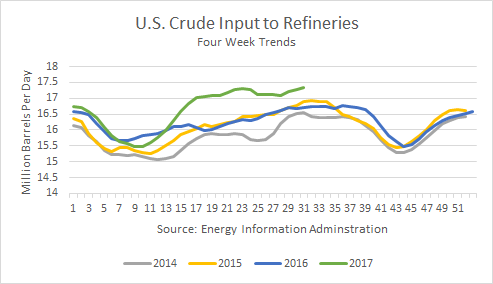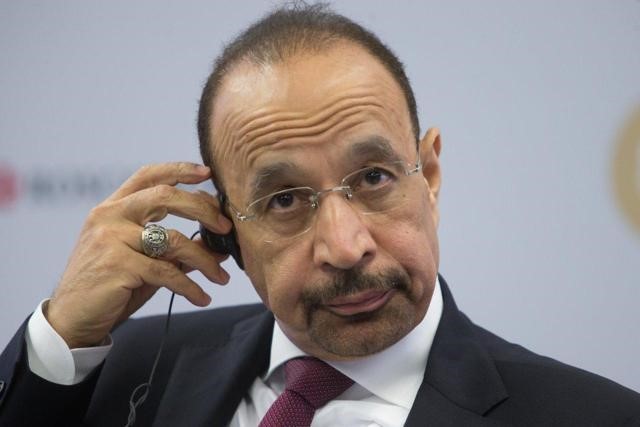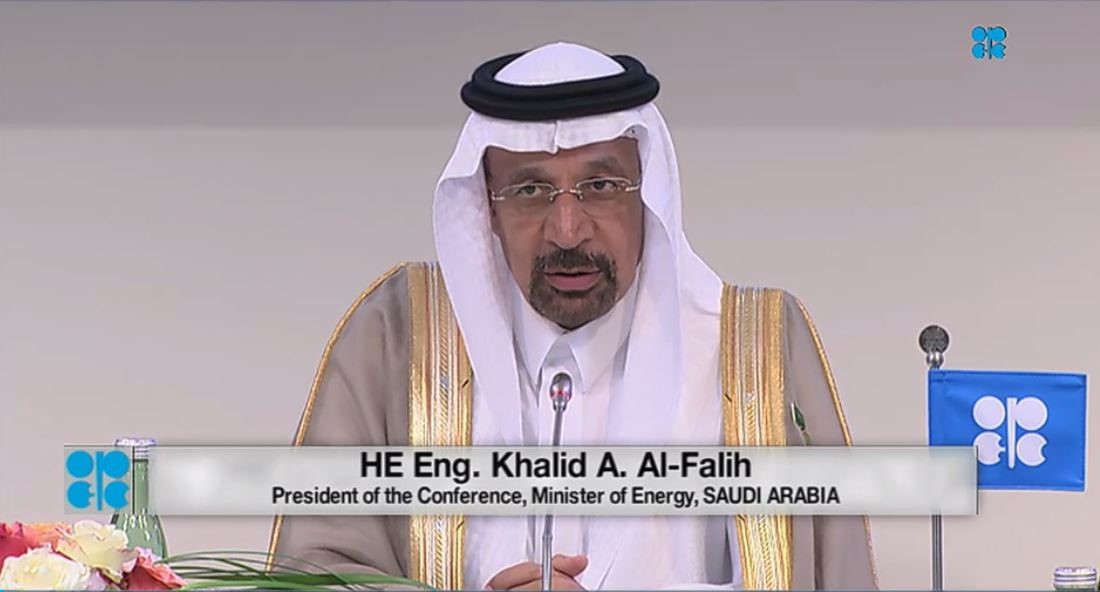
Peak demand for crude at refineries and for products to consumers is drawing to a close this season. Together, they caused total U.S. oil inventories to drop by 49 million barrels from their peak in the week ending June 9th. Total U.S. oil inventories stand at 1.304 billion barrels in the week ending August 11th, 58 million barrels lower than a year ago.
Refinery demand for crude oil set a new record high this summer, as the 4-week trend reached 17.458 million barrels per day, 4.4% higher than last year. As depicted in the graph below, refiners will soon be dialing back their operations for maintenance, and this will reduce the demand for crude at U.S. refineries by about 1.5 mmbd.

Domestic demand was relatively strong this summer, up about 2.0% from last year. Gasoline demand was somewhat disappointing, but distillate demand spiked. As shown in the graph below, seasonal demand has likely peaked and will be headed lower in the weeks and months ahead. Continue reading "Peak Oil Demand Season is Coming To A Close"



